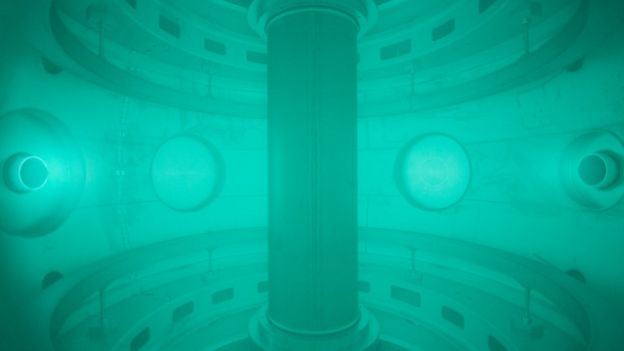
We’re just five years away from harnessing almost unlimited power from “miniature suns”, some start-ups say: nuclear fusion reactors that could provide abundant, cheap and clean energy.
In a world of global warming caused by our addiction to fossil fuels, there is an urgent need to find sustainable alternative sources of energy.
If we don’t, the future looks decidedly bleak for millions of people on this planet: water and food shortages leading to famine and war.
Nuclear fusion has long been heralded as a potential answer to our prayers. But it’s always been “thirty years away”, according to the industry joke.
Now several start-ups are saying they can make fusion a commercial reality much sooner.
What is nuclear fusion exactly?
Nuclear fusion is the merging of atomic nuclei to release masses of energy and it has the potential to address our energy crisis.
It’s the same process that powers the sun, and it’s clean and – relatively – safe. There are no emissions.
But forcing these nuclei – deuterium and tritium, both forms of hydrogen – to fuse together under immense pressure takes huge amounts of energy – more than we’ve managed to get out so far.
Reaching “energy gain”, the point at which we get out more energy than we put in, has been tantalisingly elusive.
Not any more, fusion start-ups say.
“This is the ‘SpaceX moment’ for fusion,” says Christofer Mowry, chief executive of General Fusion, a Canadian company aiming to demonstrate fusion on a commercial scale within the next five years.
“It’s the moment when the maturation of fusion science is combined with the emergence of 21st Century enabling technologies like additive manufacturing and high-temperature superconductors.
“Fusion is no longer ’30 years away’,” he maintains.

The science behind the idea has been proven, says Wade Allison, emeritus professor of physics at Keble College, Oxford. The challenge is more practical.
“The timescale we can’t be sure about, but the basic science is solved and the problems are technical ones to do with materials,” says Prof Allison.
Why is it so difficult?
A major challenge is how to build a structure strong enough to contain the plasma – the very high-temperature nuclear soup in which the fusion reactions take place – under the huge pressures required.
Exhaust systems will “have to withstand levels of heat and power akin to those experienced by a spaceship re-entering orbit,” says Prof Ian Chapman, chief executive of the UK Atomic Energy Authority (UKAEA),
Robotic maintenance systems will also be needed, as well as systems for breeding, recovering and storing the fuel.
Ministers invest £86m in nuclear fusion
“UKAEA is looking into all these issues, and is building new research facilities at Culham Science Centre near Oxford to work with industry to develop solutions,” says Prof Chapman.
So what’s changed?
Some private energy firms reckon they are surmounting these practical challenges faster through the use of new materials and technologies.
Oxfordshire-based Tokamak Energy is working on spherical tokamaks or reactors that use high temperature superconductors (HTS) to contain the plasma in a very strong magnetic field.
“High temperature” in the context of this branch of physics means a distinctly chilly -70C or below.
“They’ve been by far the most successful to date,” says Jonathan Carling, the firm’s chief executive.
“A spherical tokamak is a much more efficient topography, and we can drastically improve the compactness and the efficiency. And because it’s smaller, it can be more flexible, and the cost to build is also lower,” he says.
The company has built three tokamaks so far, with the third, ST40, built from 30mm (1.2in) stainless steel and using HTS magnets. This June it achieved plasma temperatures of more than 15 million C – hotter than the core of the sun.
